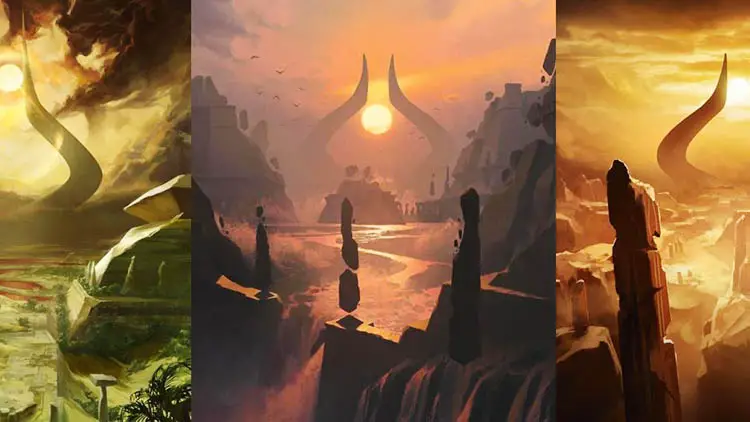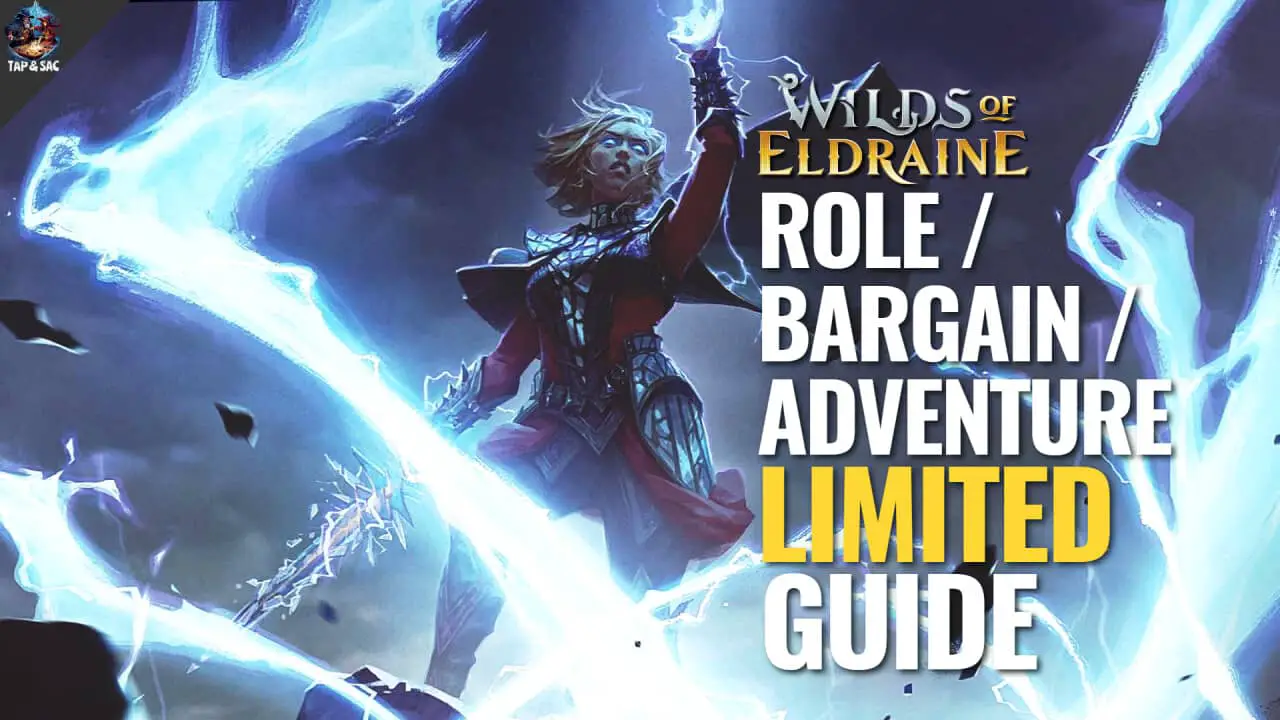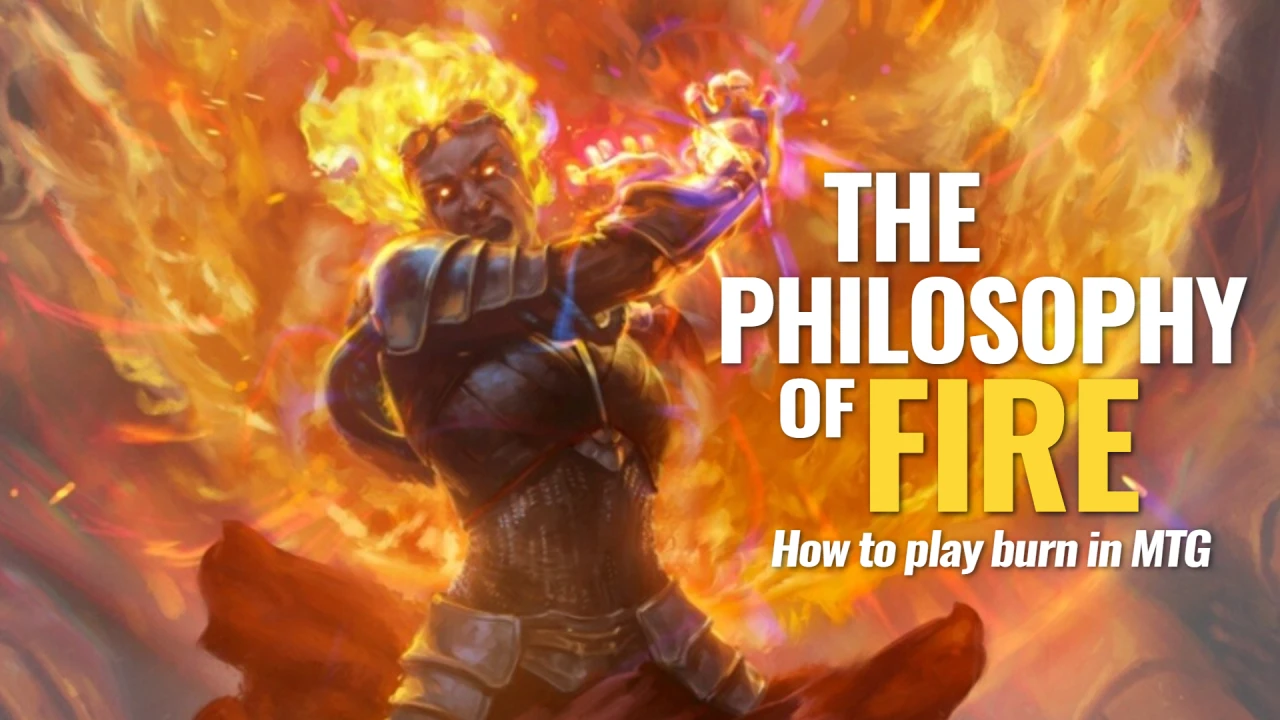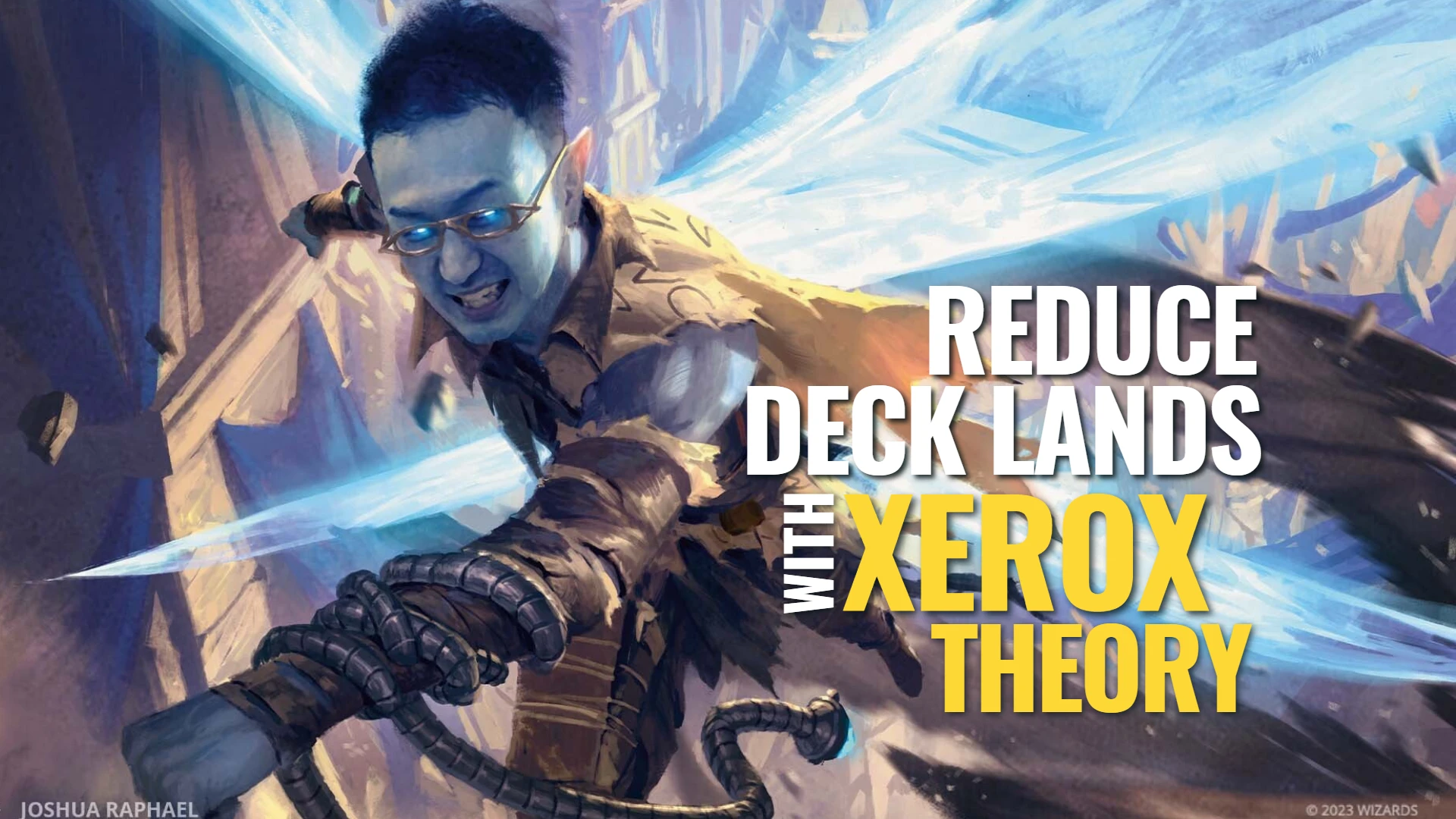One of the oldest question in Magic: the Gathering – how many Lands do I need? – finally has an answer. In this collaborative article we will tackle the popular and casual Commander format. As your deck is going to have 99 cards, the odds of drawing the Lands you need get a little trickier, at least more so than 60-card decks in other constructed formats. Every Planeswalker wants to be able to cast spells, so this project’s purpose is to establish the least amount of Lands needed to consistently cast your Commander or other spells by turn 5.
After some arduous and determined number-crunching, the ideal number of Lands and ramp cards to put in your deck so that you’ll enjoy a good game of Magic: 37 Lands and 7 ramp cards!
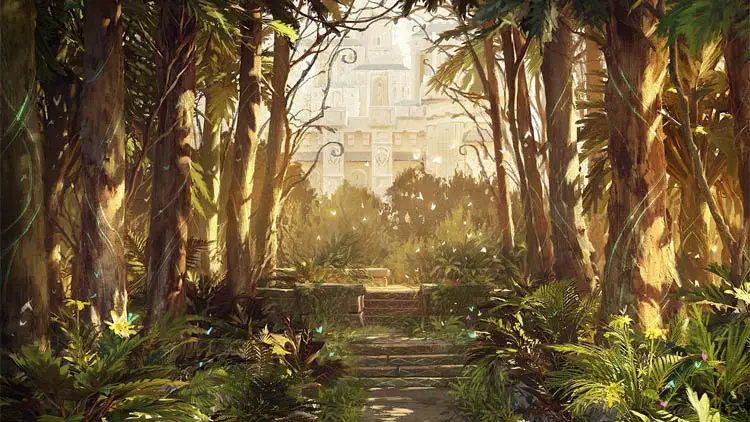
Needless to say, every Commander deck has its priorities, and some are just more Mana hungry while others can thrive on scraps. But the recommended numbers allow a fairly good chance (over 75%) of playing a fun game without bemoaning the lack of Lands. The optimal number of 37 Lands and 7 ramp cards are based on some goals and expectations of what is a good opening hand:
Be ahead of the curve (meaning having more than 5 Mana available by turn 5)
Play a Land for each of your first 5 turns.
Play a ramp spell (that costs 3 or less) by turn 3
Not overstuff your deck with Lands and ramp cards
Naturally you’ll have to do some play testing with your own deck to see if you’re getting the right amount of Mana. Also remember that there is variance in card games, and one bad opening hand doesn’t necessarily mean you have to immediately tweak your Land numbers. Before we get into the numbers and stats that led to our conclusion, here’s a quick recap on what counts as ramp in Magic:
What Counts as Ramp?
Mana Dorks and Rocks
Mana Dorks are euphemisms for Creatures that are able to generate Mana on their own, such as Llanowar Elves , Elvish Mystic and others. Because generating Mana is a core characteristic of the colour Green, you’ll find many of these dorks in Green, though Red also has a sub-theme of generating bursts of Mana (though at a cost). Unfortunately if you’re running Blue, White or Black, Mana dorks are going to be hard to come by, and that’s when you rely on rocks instead.
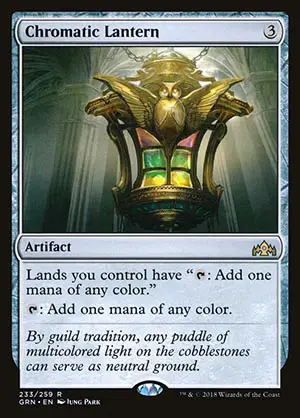
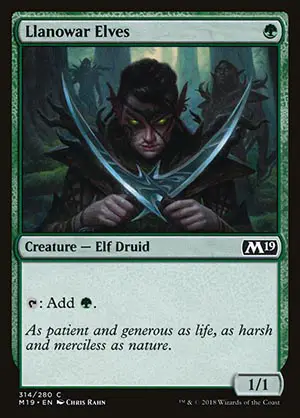
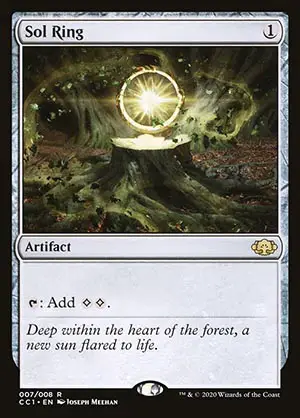
Mana Rocks are the Artifact equivalent of dorks, meaning they are non-Creatures. In Commander, the must-haves for Mana rocks are Sol Ring (instant reward of an additional colourless Mana), Arcane Signet (that can quickly tap for any colour with no drawback, Fellwar Stone and the various Talismans and Signets (allow you to filter between two colours).
There are plenty of options for Mana rocks, and in the 3 Mana Value (formerly known as Converted Mana Cost) category you have fan-favourites Commander’s Sphere, Chromatic Lantern, and Wayfarer’s Bauble (3 to cast and activate).
Direct Ramp Spells (Costs 3 or Less)
There are two general classifications for ramp spells – direct and indirect ramp. Direct ramp are cards such as Cultivate, Farseek, Three Visits, Kodama’s Reach that pull Lands out of your Library and into the Battlefield. That means you’re ahead of curve by having an additional Land put into play while also thinning your deck (slightly) to reduce the chances of drawing a Land later in the game. You can also consistently re-use this extra Land in all your subsequent turns. In this study, we will only be looking specifically at direct ramp spells that cost 3 or less, so that we can play them on turn 3 or earlier.
What about indirect ramp? These are not taken into account for today’s purposes because these are spells that gives you the ability/option to ramp, but relies on certain conditions. For example, Exploration allows you to put more Lands onto the Battlefield each turn. While it’s great in your opening hand, what if you draw it on turn 4 or later when all your Lands are already on the board?
Other kinds of indirect ramp spells are cost reduction effects such as Herald’s Horn. Again it all depends if you fulfil its conditions and are able to take advantage of the reduction. Drawing and casting Artifacts, Enchantments, Planeswalkers etc. will not let you use that cost reduction, hence the ‘ramp’ you’ve acquired isn’t exactly direct. You may get it to use it one turn but not the next.
How Many Lands To Put in Your Commander Deck?
The charts you see from here onwards were created with Excel spreadsheets combined with Aetherhub’s HyperGeometric calculator. Please feel free to run the test yourself and let us know if there are any errors in the numbers.
How many Lands should we target? That depends on what is defined as a “keepable” hand. Most decks will require 3-5 Lands to get going as plenty of Commanders fall within this cost range. Now assuming we want pretty good odds (75% chance and above) to draw 3-5 Lands in our opening hand, and that everyone gets 1 free Mulligan, then the optimal number of Lands to have in your deck is 37.
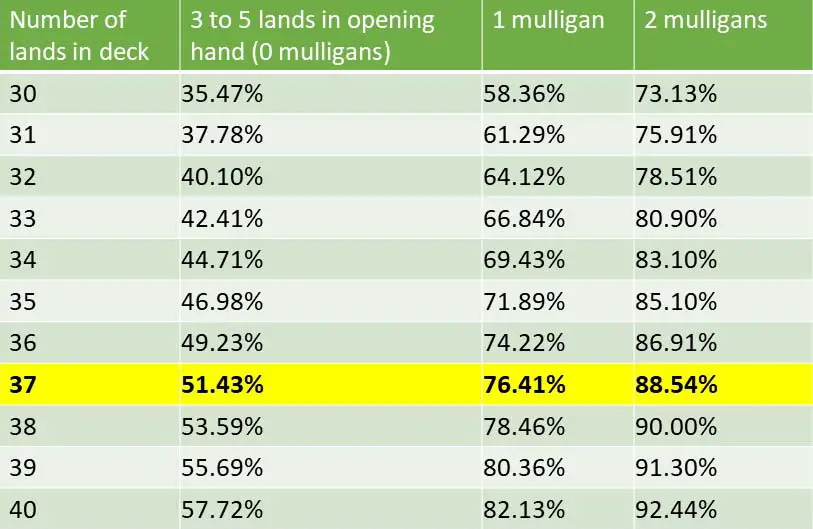
In the highlighted row above, having 37 Lands means only a 51% chance to draw 3-5 Lands in your opening hand, but thanks to Commander format’s often-used free mulligan guideline, those odds jump significantly to 76.41%. Three out of four tries is a good ratio to target. And if that still doesn’t work, going for a second mulligan (you’ll have to put one card back to the bottom of Library) gives you a staggering 88.54% chance of hitting those 3-5 Lands.
How Many Ramp Cards to Have in My Commander Deck?
If you recall one of our first assumptions and targets, we want to be able to play ramp spell (that means Mana rock, dork or ramp) by turn 3. That means we have to calculate the odds of drawing at least one ramp spell in our first 10 cards (including opening hand).
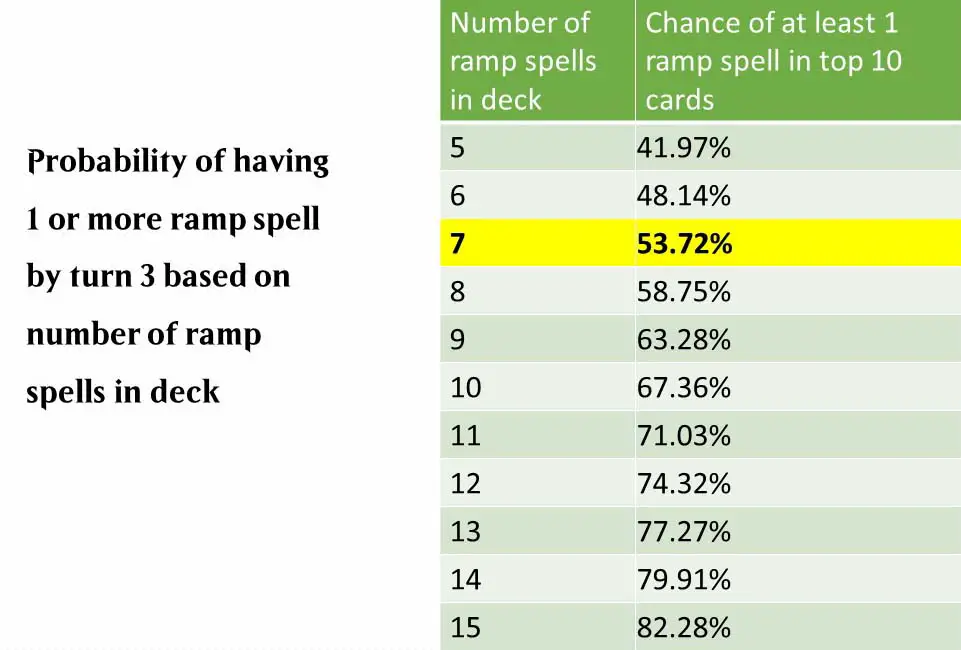
If we target to have 7 ramp spells in our deck, as highlighted above, that gives a good 1 in 2 chance of drawing that ramp spell in the first 10 cards. You might think 50% odds aren’t that great, but statistically anything strictly above 50% is already in your favour. Note that these ramp figures are based on 0 mulligans, hence having 1 free mulligan (like in our tests for Lands) will also increase those odds.
Also remember that if you add to many ramp spells, yes you will have better odds of finding them early, but also come at the worst possible timing in the late game when you need more interactive spells rather than ramp ones.
So How Many Lands AND Ramp Spells Should You Have in Your Deck?
Now that we’ve determined the right number of Lands (37) and ramp spells (7) to give you the best odds of getting both Lands and ramp spells, let’s see how this impacts the overall percentages when you combine these mutually independent events together:

What is this – Only 41%? So even after determining the ideal number of Lands and ramp spells separately, combined the chances of having 3-5 Lands plus 1 ramp spell by turn 3 is about 41%, less than 50%. It does show statistically how hard it is to fulfil both these requirements.
Remember that separating these requirements still give you good odds, meaning there is still 76% chance of drawing 3-5 Lands in your opening hand (but with no ramp spells) if you have 37 Lands in your deck.
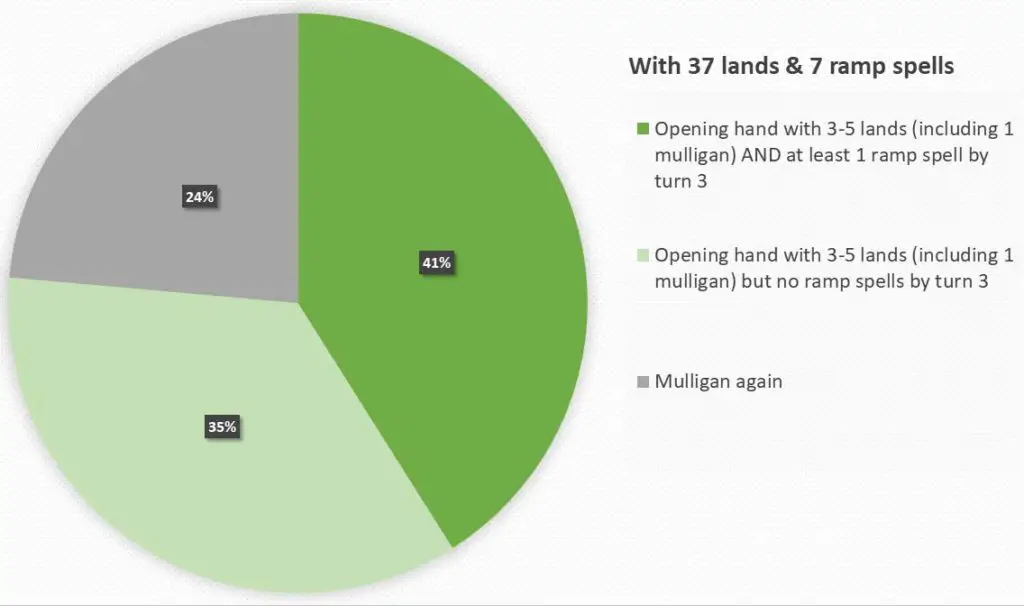
Since we know there’s a 76% chance of getting 3-5 Lands in our opening hand (after 1 mulligan), and 41% chance of doing that plus getting a ramp spell by turn 3, then there’s only a 35% chance of drawing the Lands but not the ramp spell. Still pretty decent odds if you ask the average Magic player. In that 24% slice of the pie where neither happens, then you could mulligan again, which will nett you one less card but greatly increase your odds of hitting 3-5 Lands.
End Step
If you’re new to Magic or the Commander format, following this general guideline of 37 Lands and 7 ramp spells will get you up and running nicely. Do lots of play testing to see if these numbers work for your Commander. For example if you’re using a cheap 2-cost Commander such as Kwain, the Itinerant or Yuriko, the Tiger’s Shadow, then you might find 37 Lands too high as you don’t want to hit too many in your draws.
Likewise, if you’re playing Gishath, Sun’s Avatar or Zacama, Primal Calamity, then 37 could be just right or perhaps you need more ramp spells to get your Commander out quicker. Make use of the HyperGeometric calculator, and if you’re building your deck list online, some websites such as Moxfield provide great stats such as colour breakdown, costing curve etc. Do also check out our review of several deck building websites to see what suits you best.
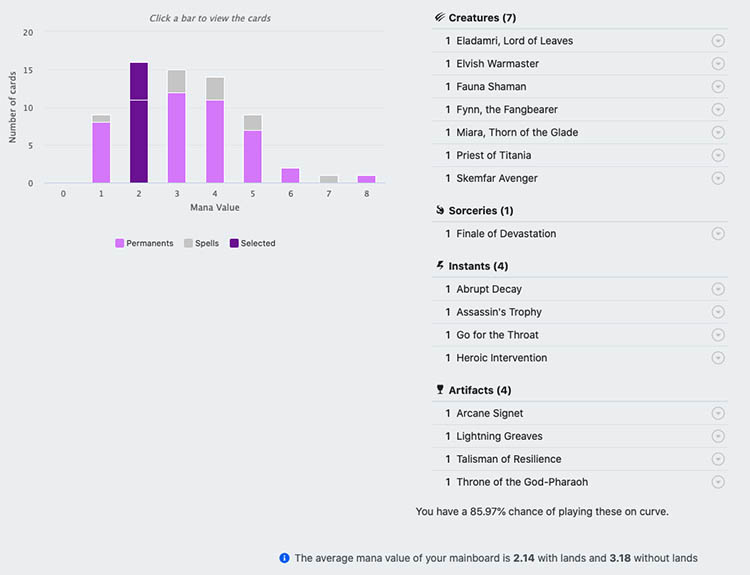
In this screenshot of the Moxfield deck builder, they compute the chance of playing cards on curve, for each Mana Value. Not shown is also a opening hand simulator where you can test how many times you are hitting those Lands.
If there’s something you’d like to add or felt we missed something, please email us!
Do check out the Games Haven channel for box openings and Commander gameplay videos!

